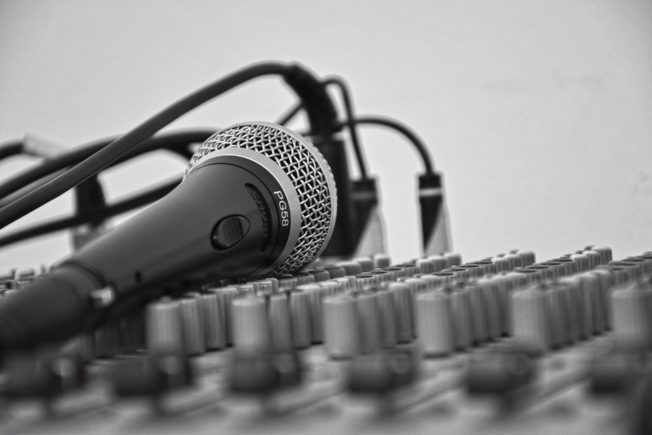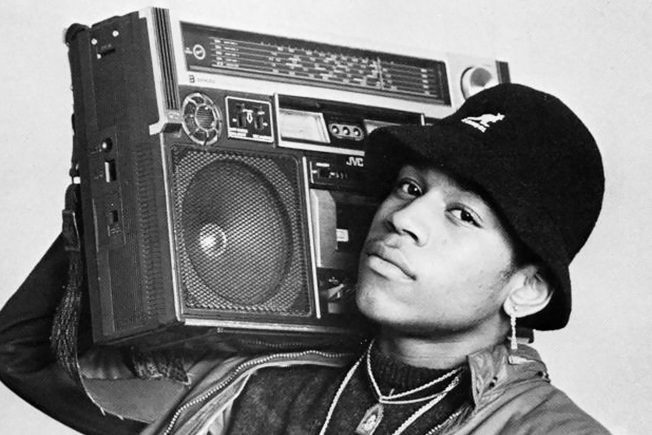Do you want to become a better singer-songwriter? This guide offers ten productive tips for aspiring singer-songwriters who write and record vocals.

Singer-Songwriter Tips
Songwriting is not an exact science. Sure, we have formulas and guidelines to help us create the next big hit, but nothing is permanent. What can we do to develop into effective and desirable songwriters in an ever-changing industry?
This guide offers ten productive tips for aspiring singer-songwriters looking to improve their skills and workflow.
1. Choosing a Song Structure
The hardest part of forming the structure of your song is picking one and sticking to it. Consider your song structure as a puzzle, and you must fill in the missing pieces.
There are several different types of song structure. Popular music is often based on traditional song structures. There’s nothing wrong with using classic structures, as long as you don’t get stuck using the same patterns over and over. Moreover, every structure has a purpose, and you need to choose the one that fits your idea best. Also, when crafting a song, take into consideration the genre and song structure that best suits it. For example, below is one of the more common structures heard in pop music:
Verse – Pre-chorus – Chorus – Verse – Pre-chorus – Chorus – Bridge – Chorus
A recent example of this song structure is “East Side” by Benny Blanco, Halsey, and Khalid. The structure they implemented helped create a back and forth between the male and female voices. This call and response technique also builds tension. Moreover, that tension keeps the listener tuned in for the entire song.
Researching song structures and knowing all of your options will help keep your writing fresh and new every time. Pick your form with purpose, and study the songs that you love to understand how the structure contributes to a song. An excellent source for studying song structure is Pat Pattison’s book “ Writing Better Lyrics.”
2. Choosing a Song Topic
What is inspiring you at this current moment? What has you swimming in your creativity? Are you in love? Did you get a promotion? Did you get fired? These are questions that will help you find inspiration.
The beauty of songwriting is anything goes. I once wrote a song about playing hangman while bored at work. The best love song I’ve ever written is about music, not a person. I’ve also written songs about my best friends, my roommate, my roommate’s boyfriend, my dog, and my dates (both good and bad). The list is never-ending. Do not limit yourself, find inspiration from everything big or small.
Furthermore, there are a few things to try if you’re struggling to jump start ideas. For example, when writing lyrics, start free writing with your dominant hand until you run out of ideas. Then, switch to your non-dominant hand and try to continue writing. With this method, I can get another page or two worth of ideas. This idea comes from Sheila Davis’s “ The Songwriters Idea Book.” She also has 30 other ingenious techniques to jumpstart your creativity.
3. Reading
Reading keeps your brain sharp and helps you develop an extensive vocabulary. It’s also imperative to read if you’re someone who works with words and lyrics. However, if you’re anything like me, you probably don’t have much time to enjoy a good book. If you don’t have enough hours in the day to read, a great substitute is audiobooks and podcasts. There are plenty on YouTube, Spotify, and audible.com.
I typically listen to audiobooks any time I’m in the car or walking my dog. I find that listening to other peoples stories inspire me to write my own. Some of my current favorites are “ Born a Crime ” by Trevor Noah, “ The Last Black Unicorn ” by Tiffany Haddish, and “ A Life in Parts ” by Bryan Cranston.
4. Study Songwriting
We never stop learning. Every day you can learn something new, you just need to know where to look. For example, I never had time to take songwriting classes while in school. So, I bought books by songwriters and learned from them instead. These books are not rules by any means. They are guidelines to help you discover your style and the different techniques that will improve your writing.
Some of my favorite songwriting books are “Writing Better Lyrics” by Pat Pattison and “The Songwriters Idea Book” by Sheila Davis. Both of which I mentioned already. Sheila Davis’s book analyzes your Myers-Briggs personality test. It also gives you writing exercises geared toward your specific personality and style. I’ve found this method incredibly helpful for understanding why my brain organizes words, which has improved my writing dramatically.
5. Overcome Writer’s Block
Writer’s block is the worst. So, how can you overcome this creative roadblock? Most often the solution is to step away from the project for a bit. Take a nap, call your mom or best friend. My favorite way to work out that stress is to exercise or take a hike. I have a special little spot in Los Angeles with a hidden hiking trail and a perfect view of LA. I go there whenever I’m feeling drained or uninspired. It also reminds me of why I’m here and what I’m trying to accomplish.
The best way to stay efficient and avoid writer’s block is to make sure you seek out inspiring moments. Staying holed up in a bedroom or a studio leaves little room to find inspiration. And, if you’re stuck, that’s your brain telling you to stop, take a break, and come back fresh later. So work hard, but be kind to yourself.
Bouncing ideas off of another person is also an excellent way to kick the curse, which brings us to collaboration.
6. Collaborate with Another Songwriter
Working with other songwriters and producers is an amazing way to hone your skills. I enjoy being the least talented or experienced person in the room because I always learn something new.
Moreover, collaborating builds relationships and invites opportunity. Taking on new opportunities will also help you develop your skills and grow as a songwriter.
Also, if you’re working with a new co-writer for the first time, you’ll feel more confident and prepared if you do some research. Get to know your co-writers style. It’s also important to determine each other’s strengths and weaknesses.
Lastly, we’re all trying to achieve similar goals. So, collaborating and working with others is a great way to ensure that everyone grows as a team.
7. Building a Writers Toolkit
A writer’s “toolkit” consists of all the essentials needed to reach peak creativity. For example, if you prefer to handwrite lyrics, have a good notebook and pen or pencil handy. I use two different written notebooks for writing. They’re called the musician’s notebook , and the songwriter’s notebook. Both are available on Amazon for about eight dollars a piece. They include ways to save the date of creation and the source of inspiration. They also provide an editing section and a final lyrics section.
If you prefer to type your lyrics, choose an app that works best for your workflow. For example, I use Google Drive for co-writing because of the simultaneous editing feature. I’ll also use Evernote when writing on my own.
Websites like rhymezone.com, rhymer.com, and thesaurus.com are also great resources to ensure creative writing. Having a thesaurus readily available is key to being a clever songwriter. How many different ways can we say love, happy, or sad? Moreover, it’s essential to expand your vocabulary. Try searching for your most commonly used words and replacing them with something different.
8. Developing Your Style
Are you a flowy future bass writer? Do you have a sexy RnB vibe? Are you into bubblegum pop? Identifying your musical style will help you stay focused. It also helps you make better creative decisions while you develop your sound.
Moreover, music genres are consistently changing, so adaptation is key. Begin with a style of music you know well, and expand from there! It’s ok to be inspired by artists you love and draw ideas from there style. However, don’t be a copycat, find a unique way to define your signature style. It’s also important to understand your limitations. Don’t be afraid to work outside of your comfort zone or pop your bubble. Trial and error will help you grow, find confidence, and discover what works best for you. Along the way, you’re sure to learn about happy mistakes. Remember, study songwriting the best you can and always trust your sense of what sounds good and what doesn’t. You learn from every experience.
9. Save Your Work
Just because a lyric line doesn’t work in one song doesn’t mean it won’t work in another. It’s essential to save the lyrics you write or record. For example, have you ever recorded a sweet hook for a producer who didn’t feel it? Don’t trash it – odds are another producer will love it. Hold on to your ideas and develop them as you grow. For instance, I’ve sat on lyrics for several years before having them scooped up. Moreover, saving your work builds a library you can present to clients as a vocal portfolio. It also speeds up workflow when collaborating if you have some ideas ready to go.
10. Stay Organized
If you’re going to hoard lyrics, make sure everything is organized and easy to find. That’s why I love apps such as Google Drive or Evernote. They allow you to sync between different devices, organize your notes into folders and notebooks, and edit them quickly.
If you’re a hand writer, make sure to keep everything in a safe place. It’s also wise to keep digital copies of your work. You can convert them to a software document, take a picture, or record them.
On top of keeping your work organized, having a clean workspace is also crucial. An organized workspace helps with creative flow and limits distractions.
The Wrap Up
Writing lyrics for songs is tough. Sometimes it’s frustrating, and other times incredibly rewarding. We, as songwriters, can create something captivating out of thin air. Small actions add up to big rewards. Taking these small steps to ensure outstanding work is also a surefire way to be the best songwriter possible. Let’s create!

Turn your passion for music into a Profession: Learn more about our Music School Programs!
MORE ARTICLES FROM THE ICON BLOG

FIND YOUR SOUND, HONE YOUR CRAFT:
Are you ready to turn music into a career? ICON prepares students to become music producers, composers, performers, recording artists, professional DJs, and entrepreneurs in the entertainment industry. Click below to get information about our award-winning programs:

